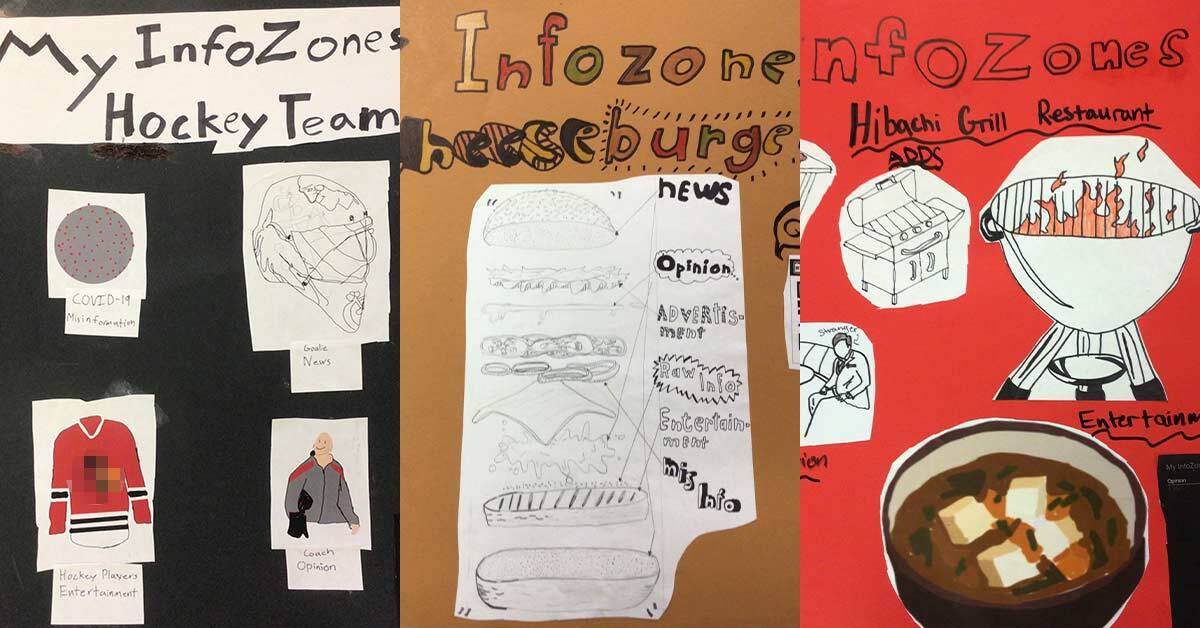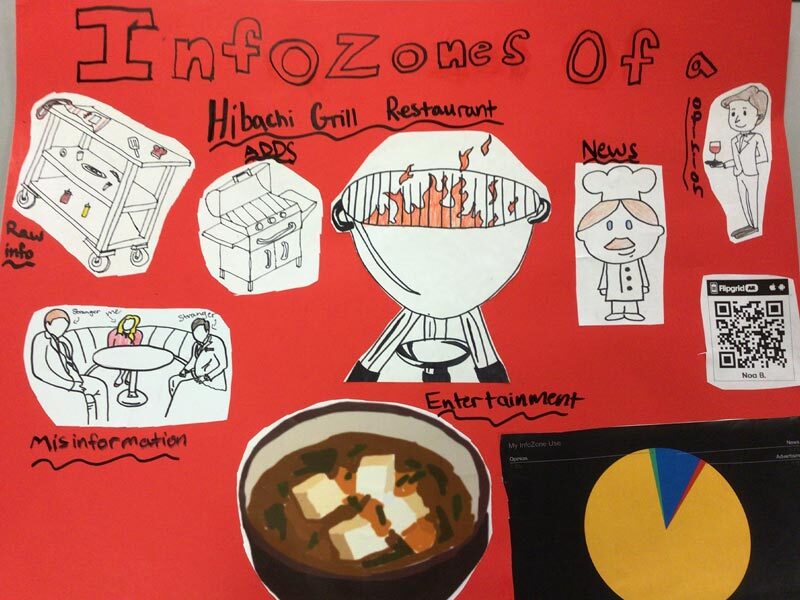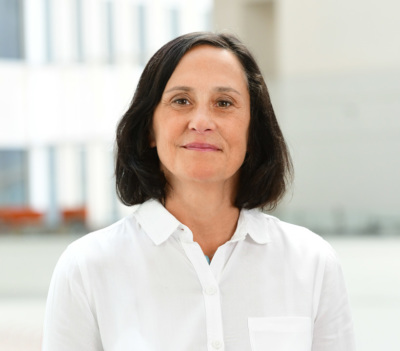
Cheeseburger, hockey game help students understand information ecosystem
We often use metaphors to describe the world of information that engulfs us — a landscape, a highway, an ecosystem. What about a cheeseburger, a hockey team, a solar system or a hibachi restaurant?
Those are among the “ecosystems” that seventh graders in Kenilworth, Illinois, chose as metaphors to describe major categories of information. Their work was part of a media literacy component in Jeff Rosen’s social studies class at the Joseph Sears School.
He uses NLP’s Checkology® lessons “InfoZones” and “Misinformation” to provide foundational news literacy concepts. Rosen asks students to reflect on their information habits and connect what they’ve learned to their lives.
“The purpose of the assignment is to challenge students to apply their understanding of the ‘InfoZones’ to a new context: selecting a system and its parts to represent the zones,” Rosen said. Those six categories are news, opinion, advertising, entertainment, raw information and misinformation. “By critically thinking about the ‘InfoZones’ in this way, students will be able to remember and understand them at a much deeper cognitive level.”
That’s where the cheeseburger, solar system and other analogies plucked from the students’ daily lives factor in.
Last year, Rosen asked students to create posters and write about what they learned, and he shared that work with NLP. This year he asked them to make videos for the Microsoft education platform Flipgrid. “The video component allows students to practice verbalizing their thoughts. It also increases student engagement by connecting the curriculum to something they do and see all the time in their lives outside of school,” Rosen explained.
‘InfoZones’ ecosystems
Consider the examples from the videos below.
- The supply cart represents raw information in Noa Boeing’s hibachi restaurant ecosystem. “The supply cart holds all the necessary ingredients for a successful hibachi restaurant. The ingredients and supplies in the cart are unchanged until the chef decides to use them.”


- Winston Ottsen selected the coach to illustrate the opinion zone in his hockey game ecosystem. “This symbol represents the InfoZone opinion because different coaches have different opinions on how to run the team, just like how opinion writers have different opinions on other topics.”
- For Emily McMahon, a visit to the snack bar describes the purpose of advertising in her basketball game ecosystem. “During halftime people usually go to get snacks, and when you go to get snacks, they try to sell you other stuff than what you want.”
- Whatever their systems, the students show a clear grasp of all zones and understand the dangers of misinformation. Sierra Jones’ solar system provides a powerful example. “My symbol for misinformation is a black hole. A black hole messes up the universe, and misinformation can mess up much more.” And Douw O’Kelly’s cheeseburger-based description of misinformation works by appealing to the senses. “The symbol I chose for misinformation is the onions, as it leaves a bad taste in your mouth. It also makes your eyes watery and your nose runny, the same way misinformation leaves a bad taste and gives you a blurry vision of the world around us.”
Watch a video compilation of all student work here. You can find topics inspired by Rosen’s “InfoZones” project on NLP’s Flipgrid partner page. Just pick a topic like “Zone experiment” or “Information ecosystems”
Accomplishing the learning objective
Combining Checkology lessons with the creativity of designing posters and making videos kept Rosen’s class highly engaged. “They connected the material to their own lives, realizing how much time they spend clicking on and seeing so much information every single day,” he said. “They also enjoyed merging the digital world of Flipgrid with creating a more traditional poster board with their hands.”
Students also gained insights into their own information consumption habits as they tracked their “InfoZones” usage. “They were genuinely surprised by how much entertainment they were viewing every day. And many of them acknowledged that they should spend more time on other ‘InfoZones,’ like news,” Rosen noted.
He said this project provides a multifaceted and meaningful way for students to grasp the topic. “I want my students to be able to distinguish the types of information they see, read, and scroll through every day, and this assignment is a tool to accomplish that objective.”
